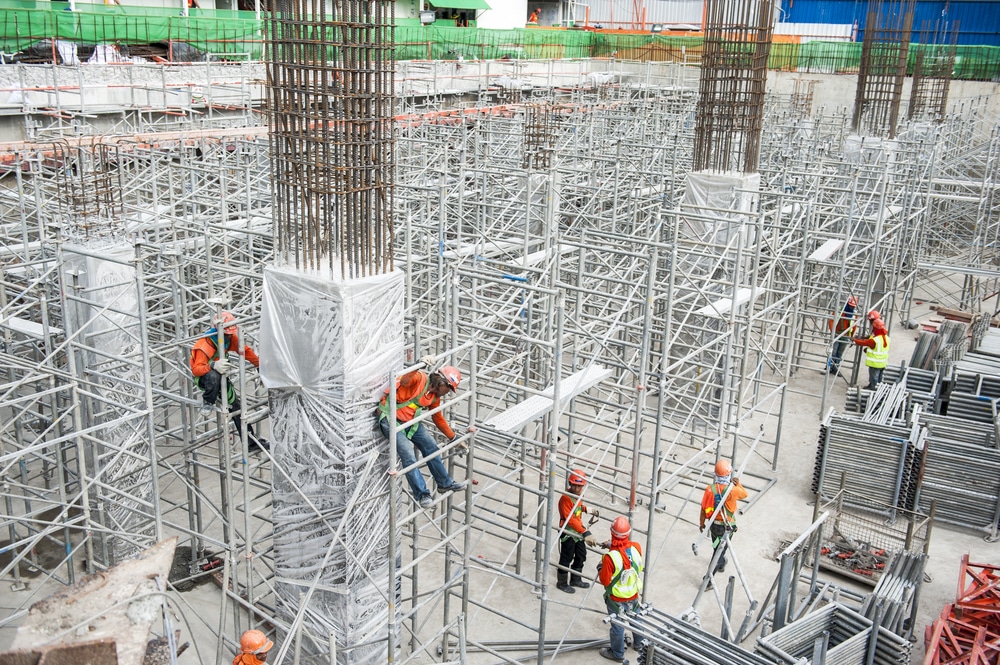In the bustling metropolis of New York City, where every street corner holds a story and every skyscraper kisses the clouds, the skyline is in a perpetual state of evolution. The city’s architecture is a testament to progress, innovation, and the ever-changing needs of its inhabitants. And amidst this constant flux, one often overlooked yet indispensable feature stands tall, quite literally—the Scaffold New York.
Historical Evolution of Scaffold New York
Throughout history, scaffold NewYork has been indispensable tools in the construction industry. From ancient civilizations using rudimentary platforms of wood and bamboo to support their monumental endeavors to the sophisticated systems employed in modern construction, scaffolds have continuously evolved to meet the demands of builders. In New York, where the skyline is ever-changing, the use of scaffolds traces back to the city’s earliest architectural endeavors.
The Role of Scaffolds in Modern Architecture
In the realm of modern architecture, where skyscrapers reign supreme, scaffold installation play a pivotal role in facilitating vertical construction. These towering structures, reaching dizzying heights, require robust support systems to ensure the safety of workers and the structural integrity of the building. Scaffold New York provide a secure platform for workers to access various levels of the construction site, allowing them to perform tasks ranging from welding steel beams to installing glass panels with precision.
Safety and Regulation
Safety is paramount in the construction industry, and scaffold NYC is no exception. Rigorous safety measures and regulations govern the design, erection, and use of Scaffold New York systems to minimize the risk of accidents and injuries. From ensuring proper installation by certified professionals to conducting regular inspections and maintenance checks, regulatory frameworks aim to uphold the highest standards of safety on construction sites throughout New York City.
Aesthetics and Design
While primarily functional in nature, scaffolds can also be aesthetically pleasing elements in architectural design. In recent years, architects have embraced the visual potential of scaffolds, incorporating them into the overall aesthetic of buildings undergoing renovation or restoration. Instead of concealing scaffold NewYork behind drab covers, designers have explored creative ways to integrate them into the façade, transforming construction sites into works of art in their own right.
Economic Impact
Beyond their practical utility, scaffolds also have significant economic implications for the construction industry and the broader economy. By providing a cost-effective means of accessing elevated work areas, scaffolds contribute to the efficiency and affordability of construction projects. Moreover, the scaffolding NYC industry itself generates employment opportunities for a diverse range of skilled workers, from scaffold erectors to safety inspectors.
Sustainable Practices
In an era of increasing environmental awareness, sustainability has become a central concern in construction practices. Scaffolding New York, traditionally constructed from materials such as steel and aluminum, are undergoing a green revolution. Innovative technologies and materials, such as bamboo and recycled plastics, are being utilized to create eco-friendly Scaffold New York systems that minimize environmental impact without compromising safety or durability.
Take, for example, the High Line, a former elevated railway transformed into a lush green oasis weaving through the heart of Manhattan’s West Side. During its construction, scaffolds adorned with striking artwork not only shielded pedestrians from the construction below but also sparked conversations about the intersection of nature, art, and urban development.

Preserving the Past, Building the Future
But Scaffold New York are more than just aesthetic embellishments—they play a crucial role in preserving New York’s architectural heritage while ushering in a new era of innovation. In a city where historic brownstones stand shoulder to shoulder with sleek glass towers, the need to balance preservation with progress is paramount.
Scaffold New York act as protective cocoons, safeguarding delicate facades and intricate ornamentation from the ravages of time and construction. They enable restoration experts to work their magic, breathing new life into centuries-old buildings while ensuring they remain structurally sound for generations to come.
At the same time, scaffolds facilitate the birth of modern marvels, providing the scaffolding—both literal and metaphorical—for groundbreaking architectural feats. From the soaring spires of One World Trade Center to the gravity-defying curves of the Vessel at Hudson Yards, these structures would not have been possible without the humble scaffold as a NYC scaffolding for creativity.
Navigating Challenges
However, the ubiquity of scaffold New York City’s skyline also poses its fair share of challenges. For residents and businesses alike, navigating the maze of scaffolding can be a frustrating and disorienting experience. Sidewalks shrink, storefronts disappear from view, and the constant cacophony of construction becomes the soundtrack of daily life.
Moreover, the prolonged presence of scaffolds can have economic repercussions, with businesses located beneath them reporting a decrease in foot traffic and revenue. In a city where every square foot of real estate comes at a premium, the inability to fully utilize storefronts or outdoor spaces can spell disaster for small businesses already struggling to survive.
Towards a Scaffolded Future
As New York City continues to evolve and grow, the role of scaffold NYC in shaping its architectural landscape will only become more pronounced. However, it is essential to strike a balance between progress and preservation, innovation and inconvenience.
Local governments and urban planners must work hand in hand with architects, developers, and community stakeholders to develop innovative solutions that minimize the impact of Scaffold New York on residents and businesses. Whether through incentives for timely completion of construction projects, creative use of scaffolding as public art installations, or streamlined permitting processes, there are myriad ways to transform scaffolds from symbols of inconvenience to beacons of progress.
Moreover, advancements in construction technology, such as modular scaffolding systems and 3D printing, hold the promise of making scaffolds safer, more efficient, and less intrusive. By embracing these innovations and fostering a culture of collaboration and creativity, we can ensure that scaffolds continue to shape the transformation of New York’s architecture for generations to come.
Conclusion

In the ever-changing tapestry of New York City’s skyline, scaffolds stand as silent witnesses to progress, perseverance, and the enduring spirit of innovation. From humble beginnings as utilitarian structures to their current incarnation as canvases for creativity and catalysts for change, Scaffold New York have played—and will continue to play—a vital role in shaping the city we know and love.
Looking to elevate your construction project in NYC? Scaffolding Shed NYC offer the perfect blend of safety, efficiency, and reliability. Whether you’re embarking on a skyscraper construction or a historic renovation, our team has you covered.
Get in touch today to discuss your scaffold shed needs and take your project to new heights!
Contact us now to request a quote and start building with confidence.
